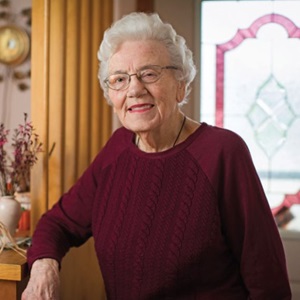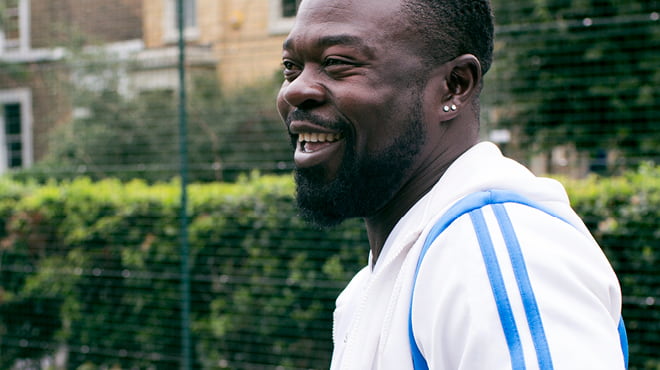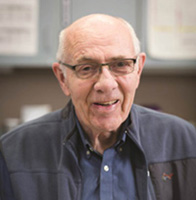Recent Posts
-
 Patient StoriesA lifesaver saved: An EMS veteran’s journey from rescue to recoveryNovember 14, 2025
Patient StoriesA lifesaver saved: An EMS veteran’s journey from rescue to recoveryNovember 14, 2025 -

-

When a stroke strikes, every minute counts

The first sign of trouble was a "strange sensation" in Dolores Brumm's right arm. By the time a friend's daughter arrived at Dolores' home just a few minutes later, the 88-year-old Eitzen resident knew something was definitely wrong. The visitor called 911. When the ambulance crew arrived, Dolores could no longer speak.
"The first responders were asking me questions, and I knew the answers but couldn't tell them," says Dolores. "It was really frustrating."
Dolores would soon learn the reason for her symptoms: she was having a stroke. Sometimes called a brain attack, a stroke occurs when the blood supply to part of your brain is interrupted or severely reduced, depriving brain tissue of oxygen and nutrients.
"Stroke is the No. 1 leading cause of disability in the U.S., and the fifth-leading cause of death," says Kelli Tornstrom, a nurse practitioner and the stroke coordinator at Mayo Clinic Health System in La Crosse.
To avoid becoming a statistic herself, Dolores needed to get help quickly. That's easier to do at places like Mayo Clinic Health System, which has a high-quality stroke program recognized by The Joint Commission and American Heart Association. Primary Stroke Center certification means an organization has demonstrated that they meet the national standards that have been established to ensure stroke patients are treated quickly and effectively.

Those standards include developing a coordinated system for stroke care. "We activate our stroke team as soon as we know we have a potential stroke patient coming in," says Kelli.
By the time Dolores arrived at the Emergency Department, the hospital's stroke team — a group that includes physicians, nurses, laboratory specialists and radiology staff — was ready. They'd also alerted colleagues at Mayo Clinic in Rochester, Minnesota, where a neurologist was waiting to evaluate Dolores via a two-way video stroke telemedicine system known as telestroke.
The partnership with Mayo Clinic gives patients the chance to be evaluated in real time by some of the best neurologists in the world. It's a great backup to the care provided and a huge advantage to patients.
Within minutes of arriving at the hospital, Dolores had a CT scan, electrocardiogram (EKG) and laboratory tests. The neurologist in Rochester reviewed the results and evaluated Dolores via telestroke technology.
Because Dolores had gotten to the hospital quickly, the specialist determined that she was a good candidate for treatment with a clot-busting medication called tissue plasminogen activator (TPA). That medication restored the blood flow to her brain.
Today, Dolores is doing well and back to the activities she enjoys, including exercising, baking and helping out with church and community activities.
"I'm certainly grateful for the wonderful first responders and the chance to get rid of the clot," she says. "There's so much they can do for you, if you get to the hospital in time."
Kelli couldn't agree more.
“We have great treatment options,” she says. “But they’re only effective within a small window of time. In the event of stroke, every second counts. Dolores is a great example of what is possible if you seek treatment quickly.”



